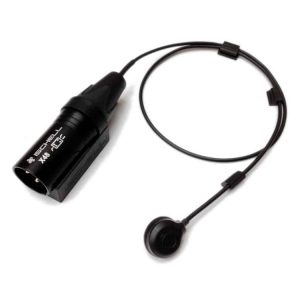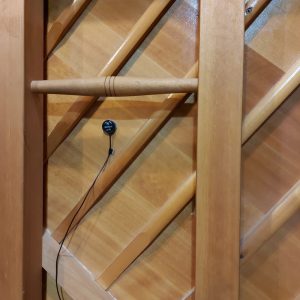Grand piano
Installation
X48C / X-Jack :


- Plan your cable route and system placement.
- Clean the gluing spots. The location of the microphone must be clean.
- The transparent double-sided provided is quite powerful but can be used on a recent varnish in good condition without damaging it. Try it out. Turn the part to peel it off. Cut small pieces suitable for the part of the microphone kit with good scissors and avoiding touching the sticky part as much as possible. Replace it after each test.
- Secure the module if necessary with the double sided or adhesive putty
- Place the contact microphone in the desired location, a cable tie at 3 cm, then make your first tests. Adjust the mic placement if necessary several times. See below.
2X48AC /2X48CC :


- Plan your cable route and system placement.
- Clean the gluing spots. The location of the microphone must be clean.
- Place the contact microphones in the desired location, a cable tie at 3 cm with a little putty adhesive then try. Adjust the mic placement if necessary several times. See below.
- Secure the aerial mic with the double sided or putty adhesive.
CPJ microphone kits APJ-ACPJ-AAPJ:
- Plan your cable route and system placement.
- Clean the gluing spots. The place where the contact microphone is placed must be clean.
- The transparent double-sided provided is quite powerful but can be used on a recent varnish in good condition without damaging it. Try it out. Turn the part to peel it off. Cut small pieces suitable for the part of the microphone kit with good scissors and avoiding touching the sticky part as much as possible. Replace it after each test.
- Secure the Jack. Use the transparent double-sided provided.
- Place the contact microphone in the desired location, a cable tie at 3 cm, then make your first tests. Adjust the mic placement if necessary several times. See below.
- Secure the aerial mic with the double sided or putty adhesive.
Positioning of the contact microphone


- As a reminder, it is important to properly prepare your contact microphone for installation, do not hesitate to reread the advice below depending on your model:
- Original C1 contact microphone preparation page
- C2 and C3 contact microphones preparation page
- We recommend placing the contact microphone at about half the length of the soundboard and about 20cm from the outer edge of the piano, treble side. The bigger hearing near the bass bridge is often a good point of reference.
- The proximity of the microphone to the reinforcement bars that are under the soundboard is very important, so you can place the microphone from below, which will allow you to easily manage this parameter. The default position, in the center between two reinforcement bars will give you a sound rich in harmonics.
- Make your first attempts, generally the tonal balance is good. If you want a duller, rounder sound, move a little closer to the nearest brace bar.
- The default low cut position for the piano is Flat. If after determining the best placement you find that there is too much bass, then set the low cut to 180Hz or 360Hz.
- If the sound is too bright, try resting the mic in the same spot with the gray putty for a duller sound in the highs and rounder in the bass.
- If the notes or strings are still more or less strong, you can compress the sound which can correct the problems of note power, strings but also overtones too present. Refer to the preparation of your contact microphone to learn how to compress the sound.
- In the case of using two contact microphones, you can place them next to each other and favor the bass for one and the treble for the other to legalization in order to create a stereo by opening the panoramas. You can also choose a different bass or complementary treble position for the second microphone.
Positioning of the aerial microphone

- The aerial microphone will be placed on one of the bars of the frame in the first third of the piano starting from the keyboard, treble side.
- The low cut position for overhead mics is always 360Hz, your system is delivered to you in this position.
Stage use
Using the contact microphone:
- Allows high levels face / returns, easy use on amp.
- Use of effects pedals, loopers with loops without repisse ...
- Contact microphone + Aerial on noisy stages, put only the contact microphone in return and on the front panel 60% contact and 40% aerial.
Common equalizations with the aerial microphone:
- Reduce the bass if necessary below 200Hz
- Make a dip around 400 / 500Hz (recurring).
- On oversized subsystems, add a low cut.
- On some systems, reduce the treble slightly.

